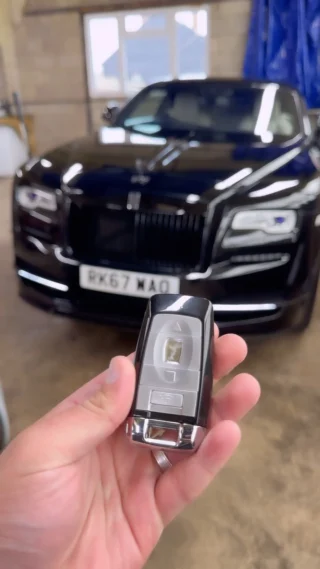Broken Key Repair: Solutions for Common Lock Issues
Introduction
Keys are vital tools in our every day lives, permitting us to secure our homes, vehicles, and individual possessions. However, they can also break, causing disappointments and troubles. Comprehending how to deal with broken key concerns is important for anybody wanting to preserve their locks and make sure access to their residential or commercial property. This article covers various aspects of broken key repair, including common causes, repair techniques, and preventive measures to avoid future instances.
Typical Causes of Broken Keys
Keys can break for a number of factors. Understanding these causes can help in avoiding future incidents:
- Wear and Tear: Over time, keys can use down due to regular usage, resulting in weakened shafts that are most likely to break.
- Poor Key Design: Keys that are badly created may do not have structural integrity, making them more prone to breaking under tension.
- Inaccurate Key Usage: Using excessive force to turn a key, particularly in a jammed lock, can quickly lead to a breakage.
- Environmental Factors: Extreme temperature levels or direct exposure to moisture can compromise metal keys, leading to brittleness.
- Lock Malfunctions: A malfunctioning lock can position undue stress on a key, triggering it to snap throughout operation.
Indications of a Broken Key
Identifying a broken key frequently features obvious signs. Here are some indicators:
- Partial insertion into the lock: If the key can not be fully placed or eliminated.
- Sudden resistance: If the key feels stuck when being turned.
- Visible divides or fractures: Inspecting the key can reveal cracks or breaks in the metal.
- Incomplete engagement: The key might turn less than required to activate the lock.
Approaches for Broken Key Repair
When confronted with a broken key, there are a number of approaches to consider for repair. It is vital to choose the right one based on your particular circumstance.
1. Eliminate the Broken Key
If a key breaks within a lock, the first action is to get rid of the broken part:
- Use tweezers or needle-nose pliers: If a piece is standing out of the lock, carefully pull it out.
- Insert a key extractor tool: This specific tool can help extract lodged parts better.
| Tool | Finest Used For |
|---|---|
| Tweezers | Shallow extraction |
| Key extractor tool | Deeply lodged key pieces |
| Lubricant spray | Alleviating extraction of stuck parts |
2. Superglue Method
For circumstances where a key has actually partly broken however is undamaged enough to stay gripped, the superglue strategy may offer a short-term fix.
- Tidy the broken surfaces thoroughly.
- Use a thin layer of superglue.
- Hold the pieces together for a few minutes till the glue sets.
Note: This approach is not an irreversible service and should be used with care as the repair can quickly fail under operational tension.
3. Metal Epoxy
For a more robust repair, metal epoxy offers a more powerful bond than superglue.
- Follow the instructions on the epoxy packaging for preparing the adhesive.
- Apply to the broken location and hold till set (typically a couple of hours).
4. Duplicate the Key
In instances where lock functionality is necessary, producing a duplicate key is frequently the very best path:
- Visit a locksmith: Many locksmith professionals can reproduce keys rapidly and efficiently.
- Use a key-tracing service: Some locksmiths use tracing techniques to cut an identical key based on the residues.
5. Lock Replacement
When keys repeatedly break, it may be because of lock concerns rather than key stability. In such cases:
- Consult a locksmith to evaluate the lock's condition.
- Think about changing the lock totally if substantial damage or wear is evident.
Preventing Key Breakage
Avoiding key damage is often better than repair. Here are some practical suggestions:
- Limit force on keys: Always turn keys carefully to prevent unnecessary stress.
- Routine key inspection: Check for wear and change keys showing signs of damage.
- Use a keychain: Prevent excessive bending by using a strong keychain.
- Lube locks: Ensure locks run efficiently to decrease pressure on keys.
- Store keys appropriately: Avoid placing type in environments that can trigger rust or deterioration.
Frequently Asked Questions About Broken Key Repair
1. Can remote key repair repair a broken key myself?
Yes, you can attempt to repair a broken key yourself utilizing methods like the superglue or metal epoxy strategies. However, these are short-term fixes, and it is advisable to consult an expert locksmith for a more durable solution.
2. Is it worth fixing a broken key?
In some cases, especially with sentimental or unique keys, a repair might deserve it. For basic keys, duplication or replacement is typically more effective and trustworthy.
3. How can I avoid my keys from breaking?
To prevent breakage, ensure that keys are not subjected to excessive force, routinely check them for wear, and keep locks properly maintained.
4. When should I look for a locksmith's assistance?
If you are unable to remove a broken key from a lock or if the lock breakdowns regularly, it's finest to look for a locksmith's know-how.
Broken keys can present a substantial inconvenience, however they are manageable with the best technique. By understanding the typical causes and available repair techniques, individuals can respond successfully to key damage. Drawing from preventive measures will also help preserve key integrity and functionality. Ultimately, transponder key repair to key and lock maintenance can substantially reduce the frequency of these annoying concerns.

